Top speed 483 km/h Wingspan 34 m Cruise speed 224 km/h | Range 4,540 km Length 23 m | |
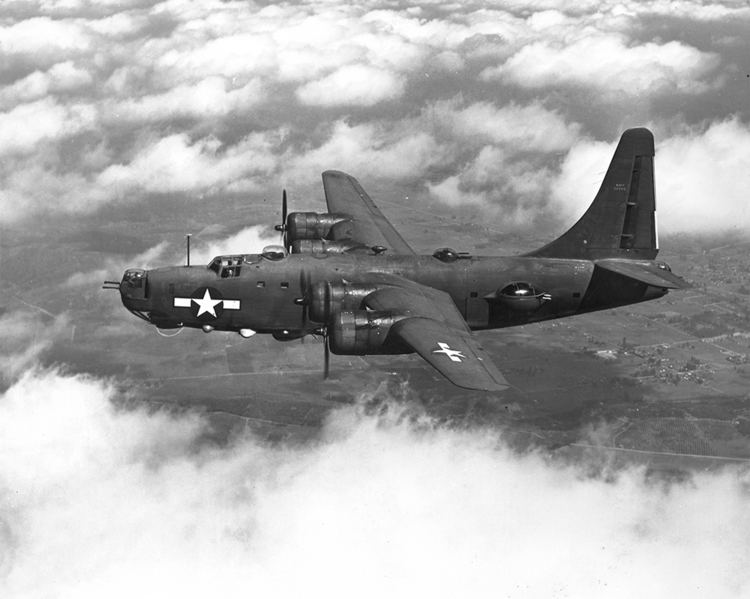 | ||
Engine type Pratt & Whitney R-1830 Twin Wasp | ||
Consolidated pb4y 2 privateer maritime patrol bomber
The Consolidated PB4Y-2 Privateer is a World War II and Korean War era patrol bomber of the United States Navy derived from the Consolidated B-24 Liberator. The Navy had been using unmodified B-24s as the PB4Y-1 Liberator, and the type was considered very successful. A fully navalized design was desired, and Consolidated developed a dedicated long-range patrol bomber in 1943, designated PB4Y-2 Privateer. In 1951, the series was redesignated P4Y-2 Privateer. A further designation change occurred in September 1962, when the remaining Navy Privateers (all having previously been converted to drone configuration as P4Y-2K) were redesignated QP-4B.
Contents
- Consolidated pb4y 2 privateer maritime patrol bomber
- Consolidated pb4y 2 privateer
- Design and development
- Operational history
- Privateers in aerial firefighting
- Variants
- Operators
- Survivors
- Specifications PB4Y 2
- References
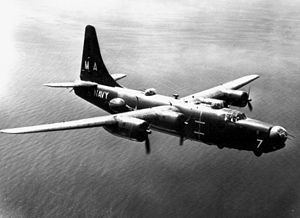
Consolidated pb4y 2 privateer
Design and development
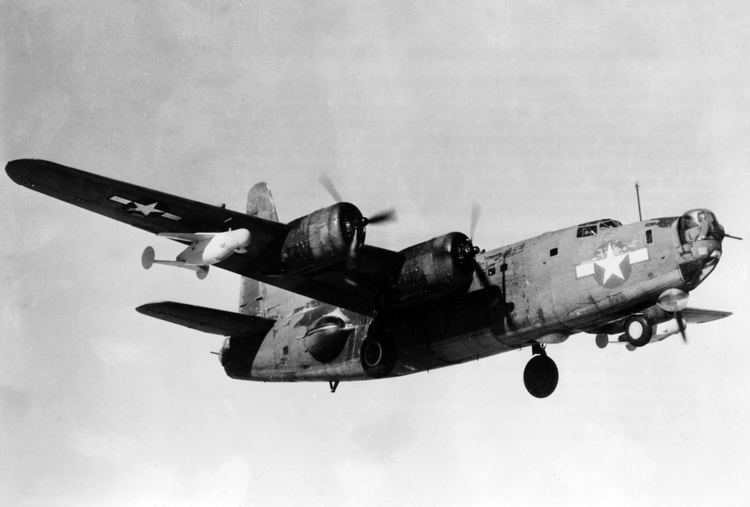
The Privateer was externally similar to the Liberator, but the fuselage was longer to accommodate a flight engineer's station, and had a tall single vertical stabilizer rather than the B-24's twin tail configuration. The defensive armament was also increased to 12 .50-in (12.7 mm) M2 Browning machine guns in six turrets (two dorsal, two waist, nose and tail), with the B-24's ventral, retractable Sperry ball turret being omitted. Turbosuperchargers were not fitted to the engines since maritime patrol missions were not usually flown at high altitude.
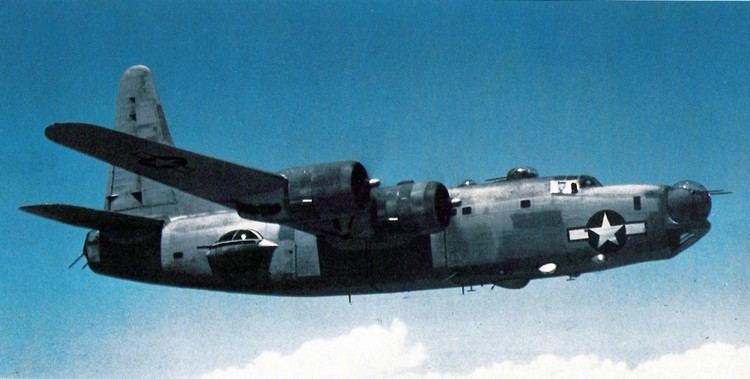
The Ford Motor Company (which produced B-24s for the United States Army Air Forces) had earlier built an experimental variant (B-24K) using a single tail. Aircraft handling was improved, and the Air Corps' proposed B-24N production model was to be built by Ford, but the order was canceled on 31 May 1945 and the B-24N never entered production. The Navy's desire for substantial redesigns, however, had sustained interest in the new tail assembly.
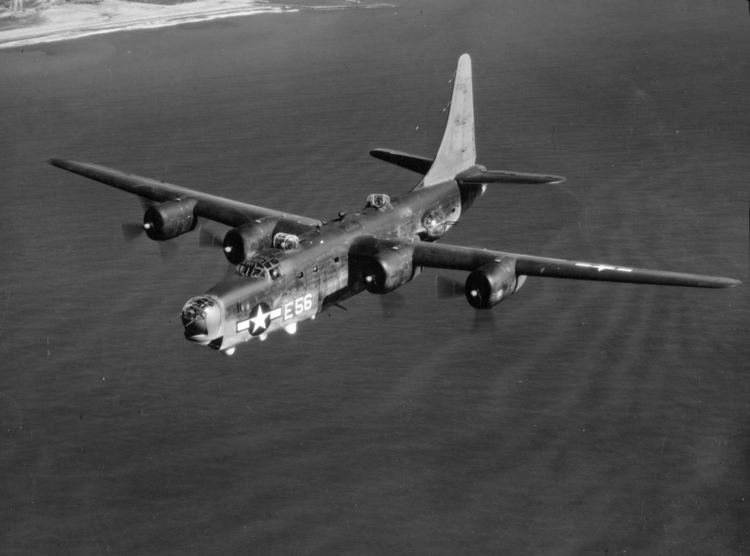
The Navy eventually took delivery of 739 Privateers, the majority after the end of the war, although several squadrons saw service in the Pacific theater in the reconnaissance, search and rescue, electronic countermeasures, communication relay, and anti-shipping roles (the latter with the "Bat" radar-guided bomb.)
Operational history
The Privateer entered Navy service during late 1944, Patrol Bomber Squadrons 118 and 119 (VPB-118 and VPB-119) being the first Fleet squadrons to equip with the aircraft. The first overseas deployment began on 6 January 1945, when VPB-118 left for operations in the Marianas. On 2 March 1945 VPB-119 began "offensive search" missions out of Clark Field, Luzon in the Philippines, flying sectored searches of the seas and coastlines extending from the Gulf of Tonkin in the south, along the Chinese coast, and beyond Okinawa in the north.
The Privateer was used as a typhoon/hurricane hunter from 1945 to the mid-1950s. One aircraft, designated BuNo 59415 of VPB-119, went down when it experienced mechanical trouble while investigating a Category 1 typhoon near Batan Island in the Philippines. It attempted to land on the island, but was unable to do so and crashed. It was one of only six hurricane hunter flights that were ever lost, and the only one found.
Privateers were also used during the Korean War to fly "Firefly" night illumination missions dropping parachute flares to detect North Korean and Chinese seaborne infiltrators. In addition, Privateers were used by the US Navy for signals intelligence (SIGINT) flights off of the coast of the Soviet Union and the People's Republic of China. On 8 April 1950, Soviet La-11 fighters shot down a US Navy PB4Y-2 Privateer (BuNo 59645) over the Baltic Sea, off the coast of Liepāja, Latvia. Named the Turbulent Turtle, the aircraft was assigned to Patrol Squadron 26 (VP-26), Det A The French also used Privateers as bombers during the Indochina War.
All Navy PB4Y-2s were retired by 1954, though unarmed PB4Y-2G Privateers served until 1958 with the Coast Guard before being auctioned off for salvage.
The U.S. Navy dropped the patrol-bomber designation in 1951 and the remaining PB4Y-2s were redesignated P4Y-2 Privateer. The earlier XP4Y-1 Corregidor was a completely different design, based on the Consolidated Model 31 twin-engine flying boat. PB4Y-2s were still being used as drones in the 1950s/early 1960s, designated PB4Y-2K, and P4Y-2K after 1951. They were then redesignated QP-4B under the 1962 United States Tri-Service aircraft designation system, part of the new patrol series, between the Lockheed P-3 Orion and the Martin P-5 Marlin.
A number of PB4Ys were supplied to the Republic of China Air Force for use in missions over the People's Republic of China. One was shot down by ground fire on 12 September 1954, near Xiamen, People's Republic of China. The crew of nine were killed. Another was shot down on 15 February 1961 by Burmese Hawker Sea Fury fighter aircraft, near the Thai-Burmese border, killing the crew of five. Two other crew members were taken prisoner. This aircraft was carrying supplies for Chinese Kuomintang forces fighting in northern Burma.
Privateers in aerial firefighting
A limited number of refitted PB4Ys and P4Ys continued in civilian service as airtankers, dropping fire retardant on forest fires throughout the western United States. On 18 July 2002, one such refitted P4Y, BuNo 66260 (seen in picture to right) operated by Hawkins and Powers Aviation of Greybull Wyoming, broke up in flight while fighting a wildfire near Rocky Mountain National Park. Both crew members were killed in the accident, and the Federal Aviation Administration temporarily grounded all large air tankers in the region. Following the accident, all remaining Privateers were retired. (See 2002 airtanker crashes.)
Variants
Operators
Survivors
Specifications (PB4Y-2)
Data from Jane's Fighting Aircraft of World War II
General characteristics
Performance
Armament
